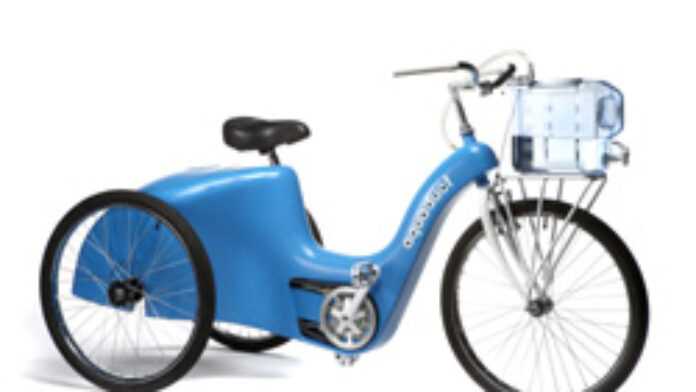
Almost 20 percent of the world does not have access to safe drinking water, which, according to the World Health Organization (WHO), means 1.6 million people die every year of waterborne diseases. A team in California has a potential solution: a tricycle that filters water as one pedals.
Designed by Ideo, based in Paolo Alto, the Aquaduct has a water tank that uses the energy of cycling to filter the water into a smaller container – providing 8l of safe drinking water.
The idea is still very much a work in progress; it was created for the Innovate or Die competition whose sponsors include the search engine Google. The Ideo team won but as Paul Silberschatz, one of the team, said, there is still a lot of work to be done to make it commercially viable.
“We were mostly designing for the competition; we did take some liberties in designing the prototype,” he said. The team is still talking to experts to understand the constraints involved in making it viable for developing countries – such as ensuring the bike can be fixed and maintained, and is affordable.
Almost 5,000 children die every day because of largely treatable waterborne illnesses – most from diarrhoeal diseases. The hours spent getting water means girls – whose task it is – often end up with little or no education.
“The vehicle is a very neat device, it gets you to the water, it filters while it’s moving. So it has a dual function, but I think when you look on a larger scale, you want to know how many people can access this type of machinery,” said Sarah Dobsevage, a programme development officer, with Wateraid USA.
“It probably wouldn’t be effective for the poorest of the poor who live on less than a dollar a day because it’s prohibitively costly. Also you have to look at what it’s made of, and ask if it’s made of locally available materials, so that a community or individual could build it themselves and repair it themselves, or is it something that can only be produced in the West.”
Ideo’s industrial designer John Lai said it was not commercially viable at the moment, but the company wanted to build on the idea.
“The Aquaduct is really a concept and we think that it could be an interesting direction to explore in terms of creating a product to address the needs that the Aquaduct addresses. We may have very different technologies involved to make the cost appropriate for the type of people we want to help,” he said.

